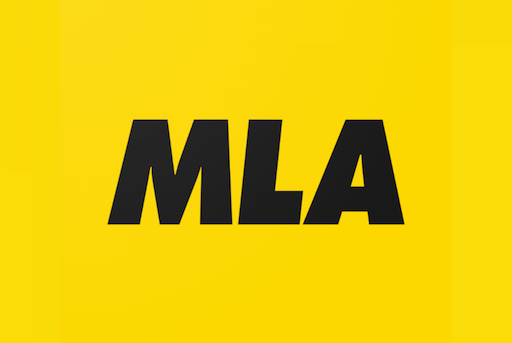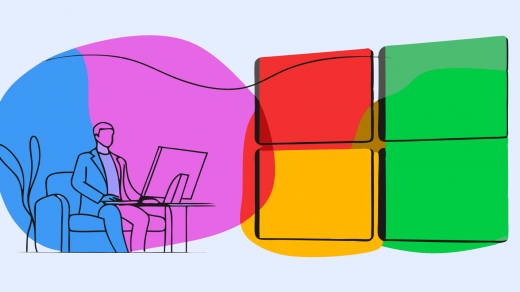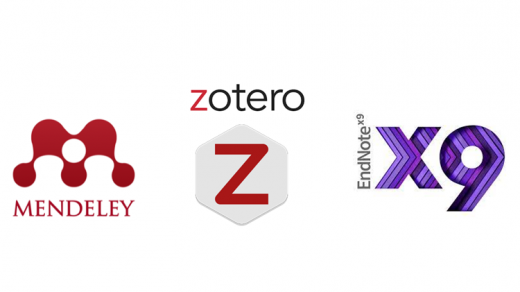The Changing Landscape of Academic Citation
Every generation of scholars inherits the task of keeping academic conventions current. Citation styles evolve to reflect changes in technology, publication formats, and scholarly ethics. Among the most widely used, the Modern Language Association (MLA) style has undergone several significant revisions in the last few decades—from the 6th to the 9th edition—each introducing refinements that address new forms of media and citation logic.
The release of MLA 9 (2021) marked a turning point in academic documentation. It expanded the flexibility of the container system introduced in MLA 8, clarified rules for digital sources, and offered nuanced guidance for ethical citation in an age of algorithmic content and evolving authorship. For researchers, this update demands more than simply changing punctuation—it requires rethinking how information is presented, verified, and made retrievable in digital scholarship.
However, the process of updating older works to MLA 9 can be complex. Many scholars and institutions still possess archives of theses, papers, and publications formatted under MLA 6, 7, or 8. Updating them involves identifying inconsistencies, reconciling formatting differences, and, increasingly, using automated citation tools with care. This essay serves as a guide to understanding why updates matter, how to carry them out responsibly, and which technologies can assist without compromising scholarly integrity.
Why Updating Matters: Consistency, Clarity, and Credibility
Maintaining Scholarly Integrity
Citations are not mere technicalities; they are the architecture of academic credibility. Outdated or inconsistent citations obscure the trail of evidence and erode reader trust. Updating citations to MLA 9 ensures uniformity across an author’s body of work and aligns it with the expectations of current peer-reviewed standards.
In earlier editions, MLA citation emphasized publication medium (“Print,” “Web,” “Film”) and relied heavily on abbreviations and prescriptive formats. MLA 9, by contrast, privileges clarity and adaptability. It simplifies punctuation, promotes lowercase labeling, and eliminates redundancy. Thus, a source once cited as:
Smith, John. Global Literature and Migration. London: Routledge, 2011. Print.
now appears as:
Smith, John. Global Literature and Migration. Routledge, 2011.
The updated version not only reads more fluidly but also aligns with the logic of digital research, where medium-specific identifiers are less relevant than stable containers and access information.
Ethical and Practical Benefits
Updating also safeguards against citation obsolescence. Many URLs and databases have changed domains or identifiers since earlier editions. MLA 9 emphasizes persistent identifiers (such as DOIs or stable URLs) to ensure retrievability over time. For example, MLA 7 often used long, nonpermanent links; MLA 9 encourages shortened, reliable ones.
Furthermore, the ninth edition reflects inclusivity in naming conventions—acknowledging contributors such as translators, editors, illustrators, and even algorithmic entities when relevant. By revising citations, scholars modernize their ethical alignment with current standards of credit and attribution.
In essence, updating citations is not busywork but an act of scholarly stewardship—maintaining the living archive of human knowledge in step with its evolving forms.
How to Update Citations: A Step-by-Step Method
Converting an older manuscript to MLA 9 requires systematic attention to detail. Scholars often underestimate the subtle structural changes between editions, but even small inconsistencies can cascade into confusion when readers cross-reference sources. A methodical approach ensures both accuracy and efficiency.
Step 1: Identify the Citation Edition and Scope
Before updating, determine which edition the current citations follow. MLA 6 and 7 can be identified by the use of abbreviations like “Print” and “Web,” whereas MLA 8 introduced the “container” model (book → anthology → database). Once identified, create an inventory of all cited works—either manually or with a citation manager—to evaluate which entries require major or minor modifications.
Step 2: Analyze Common Structural Differences
| Citation Element | MLA 6–7 | MLA 8 | MLA 9 | Key Update Action |
|---|---|---|---|---|
| Medium | Always required (“Print,” “Web”) | Optional | Eliminated | Remove redundant medium designations. |
| Publisher Location | Mandatory | Optional | Omitted unless relevant | Delete city names unless crucial for context. |
| URL Formatting | “http://” omitted | Optional inclusion | Include when stable; omit “http://” or “https://” | Verify link accessibility and persistence. |
| Access Date | Required for online sources | Optional | Optional unless unstable | Include if link likely to change. |
| Authors/Contributors | Only primary author | Expanded to editors/translators | Expanded further to multiple roles | Add relevant contributors. |
| Container System | None | Introduced | Clarified for multiple containers | Apply hierarchy: Item → Collection → Database. |
This comparative table illustrates the gradual simplification of MLA style toward clarity and universality.
Step 3: Reconstruct Citations Using the Container Model
MLA 9 continues the “container” system introduced in MLA 8. The model treats every source as part of one or more “containers”—larger entities that hold the source (such as a website, anthology, or database).
For example, an outdated MLA 7 citation:
“Global Citizenship in the Digital Era.” The Atlantic, Feb. 2012, www.theatlantic.com/globalcitizen. Web.
becomes, under MLA 9:
“Global Citizenship in the Digital Era.” The Atlantic, Feb. 2012, www.theatlantic.com/globalcitizen.
If accessed via a database, the database name forms a second container:
“Global Citizenship in the Digital Era.” The Atlantic, Feb. 2012. Gale Academic OneFile,
link.gale.com/apps/doc/A2839… Accessed 15 Sept. 2025.
Each “container” is followed by a period; punctuation reflects a clear chain of custody from the item to its host.
Step 4: Cross-Check Core Elements
Every MLA 9 entry should ideally include nine core elements, where available:
-
Author.
-
Title of source.
-
Title of container.
-
Other contributors.
-
Version.
-
Number.
-
Publisher.
-
Publication date.
-
Location (pages, DOI, or URL).
Updating older citations means ensuring each element appears in proper order and punctuation. Missing elements—such as DOIs or editors—should be added when identifiable.
Step 5: Revise In-Text Citations
While MLA in-text citations have remained consistent since the 7th edition (author-page format), attention should be given to new conventions regarding corporate authors, multiple works by the same author, and multi-author sources. MLA 9 clarifies rules for et al. usage—now allowed for three or more authors:
(Johnson et al. 45)
This simplifies earlier confusion where MLA 7 required listing all authors or only the first two.
Step 6: Validate Through Tools—Cautiously
Automated citation generators (e.g., Zotero, Mendeley, EasyBib) can expedite conversion, but they should be used critically. No algorithm fully understands MLA’s nuance—especially for multi-container citations or translated works. Always verify the automated output against the MLA Handbook (9th ed.) or the MLA Style Center’s official examples.
Managing Inconsistencies and Automation Challenges
Common Problems in Legacy Documents
When updating older documents, scholars frequently encounter recurring issues:
-
Mixed Editions: Papers written over time may contain citations formatted in multiple MLA versions.
-
Obsolete URLs: Websites cited a decade ago may have vanished or been archived.
-
Formatting Drift: Copy-paste errors, italics loss, and outdated punctuation accumulate in digital files.
-
Incomplete Metadata: Early digital sources lacked DOI or database identifiers, making verification difficult.
Resolving these inconsistencies requires a blend of manual review and digital assistance.
Verification Strategies
-
Use CrossRef or DOI.org to locate missing identifiers for journal articles.
-
Consult Institutional Libraries for archived database entries—many libraries maintain permanent URLs.
-
Compare Versions: For texts republished online, verify the version and publisher date to avoid citing an unstable or derivative edition.
-
Retain Original Publication Context: MLA 9 prioritizes the version used by the researcher; if an older PDF was cited, it remains legitimate, even if newer editions exist.
Using Automation Wisely
Modern citation managers offer MLA 9 templates, but their algorithms rely on structured metadata. Older works, however, often lack this structure. The best practice is to use automation for data retrieval (author, date, DOI) and perform final formatting manually.
For instance, Zotero can import a journal article’s metadata, but if that article exists in both print and digital formats, the program may omit critical details such as page range or container database. A hybrid approach—manual verification supported by automation—ensures both efficiency and accuracy.
Detecting Style Deviations
Researchers updating large manuscripts can automate detection of inconsistencies through word processors or scripts:
-
Regular expressions (regex) can locate old “Print” or “Web” tags for removal.
-
Style-check plug-ins in tools like Grammarly or ProWritingAid can flag italicization errors or missing commas.
-
MLA Style Checker (MLA.org beta tool) can identify deviations from MLA 9’s punctuation and order.
These resources transform what was once tedious manual editing into a semi-automated quality-control process.
The Future of MLA Style: Adaptation, Automation, and Accountability
The Role of AI and Smart Citation Systems
Emerging AI-driven tools can now cross-reference citations against publisher databases, correcting metadata automatically. While promising, this development introduces new ethical questions about authorship and accountability. MLA emphasizes human oversight: the scholar remains responsible for the final accuracy of each citation.
AI tools such as Scholarcy, EndNote Click, and CiteDrive increasingly use machine learning to recognize incomplete citations and suggest corrections. However, they cannot interpret context—for instance, distinguishing a translation from an edited volume. Scholars should treat AI as an assistant, not an authority.
Version Control and Digital Preservation
As scholarship becomes more dynamic, citation systems must adapt to versioned texts, living documents, and evolving databases. MLA 9 already anticipates this by allowing version numbers and publication dates for digital works that change over time (e.g., “Version 2.3, updated 2024”).
Future revisions of MLA are likely to embrace persistent identifiers (PIDs) more deeply, aligning with data citation standards in the sciences. This will enable cross-disciplinary interoperability—bridging the gap between humanistic citation and data-driven research.
Institutional and Pedagogical Implications
For educators, updating to MLA 9 is an opportunity to teach students why citation matters, not just how. Assignments that involve converting older essays to current standards foster critical thinking about research integrity, digital permanence, and scholarly communication.
Institutions, too, benefit from uniformity. Theses and digital repositories adhering to MLA 9 maintain higher discoverability, as metadata aligns with indexing systems like Google Scholar and institutional archives. Consistent MLA formatting enhances the visibility and credibility of the institution’s research output.
Ethical Imperatives
Finally, the act of updating citations is an ethical responsibility. Outdated citations can misattribute authorship, omit contributors, or perpetuate broken links, effectively erasing parts of the scholarly record. MLA 9 promotes transparency through complete contributor acknowledgment and accurate source tracing. Updating old citations therefore contributes to the collective memory of scholarship, ensuring that knowledge remains verifiable across generations.
Conclusion: Preserving Continuity in a Moving Landscape
Updating old works to MLA 9 is more than a mechanical upgrade; it is a renewal of scholarly clarity. The ninth edition of MLA reflects the realities of a digital, interconnected research environment where sources shift, expand, and migrate across platforms. Bringing past works into alignment with these principles ensures that research remains intelligible, traceable, and credible.
The process demands both technical rigor and interpretive judgment. Scholars must navigate between automation and human oversight, balancing efficiency with fidelity to original sources. When done carefully, updating citations revitalizes existing scholarship—transforming static documents into living participants in the ongoing academic conversation.
Ultimately, the shift to MLA 9 embodies the spirit of intellectual progress: adapting tradition to meet the needs of the present without losing respect for the past. Each updated citation becomes an act of scholarly preservation—a bridge between eras of learning, ensuring that ideas continue to travel accurately and ethically through time.




